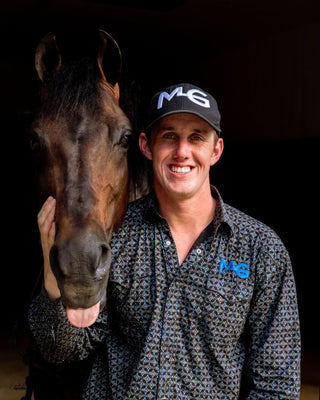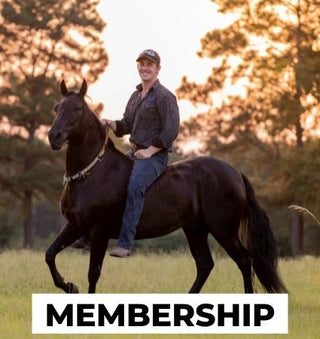Watch the Video Here or continue reading below!
Hey, Team MG! It’s Michael Gascon here with another morning training session featuring Fanny. Today, we’re continuing our work with the Garrocha Stick, a traditional tool with deep roots in dressage, cattle work, and horsemanship. In our first video, we prepped our horse using a tarp, and now we’re transitioning to using a solid stick.
The History of the Garrocha Stick
The Garrocha pole originates from dressage, which initially served as a war-training discipline. Early riders used spears to prepare their horses for battle, proving their horse’s responsiveness and control. Over time, this evolved into cattle work in Spain, where the stick helped guide and maneuver livestock. In modern America, it has become an art form, showcasing a horse’s softness, flexibility, and trust in its rider.
Preparing Your Horse for the Garrocha Stick
Before introducing the Garrocha stick, ensure your horse is:
✔ Desensitized – They should be comfortable with moving objects, such as a tarp.
✔ Responsive – Your horse should respect cues from groundwork and the saddle.
✔ Soft and Supple – They should move easily in different directions.
Start by letting your horse drag the pole, allowing them to get used to its movement. Then, incorporate circular rotations, helping them adjust to the feel of the stick while reinforcing softness and balance.
The Art of Riding with the Garrocha Stick
Working with the Garrocha is like a dance with your horse. The smoother and softer your horse moves, the more refined your connection becomes.
- One-Handed Riding: Ideally, this is performed with one hand on the reins, allowing the other to control the stick. Two-handed riding is possible but significantly more challenging.
- Encouraging Flexibility: The goal is to have your horse move fluidly, following your cues without hesitation.
- Building Control: Speed isn’t the challenge—control is. Whether walking, trotting, or cantering, your ability to maintain softness is key.
Common Challenges & How to Overcome Them
Dropping the Stick? No Problem!
If you drop the Garrocha stick, stay calm. Simply dismount, pick it up, and get back to work. The more you practice, the more second nature it becomes.
The Key is in the Practice
Unlike traditional desensitization methods, I personally prefer the tarp technique, as it both desensitizes and challenges the horse simultaneously. However, the Garrocha Stick offers a unique way to refine softness and connection.
How to Measure Progress
Ask yourself:
✅ Can my horse move with the stick without tension?
✅ Can I guide them through small circles effortlessly?
✅ Can they canter around the stick on command?
✅ Do they trust me enough to move freely with the pole near them?
Choosing Your Equipment
The Garrocha pole can be made from different materials:
- PVC Pipe (like our 2-inch pole)
- Wooden poles (traditional Spanish style)
- Long Tarp Straps (for more flexibility)
Regardless of what you use, the objective is the same—improving your horse’s mobility, responsiveness, and confidence.
Final Thoughts: Practice & Play
The more time you spend practicing and experimenting, the deeper your connection with your horse will be. Whether you’re using a 16-foot pole, a tarp, or any other tool, the ultimate goal is to develop a soft, responsive, and confident horse.
Try this exercise at home, and let me know how it goes! Stay tuned for the next video. Happy riding! 🚀🐴









